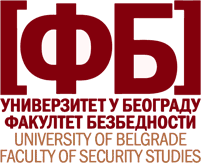| dc.description.abstract | In colloquial thought about the character of fan violence, there is an obvious trend of identifying hooligan groups with crowds. Furthermore, we can often hear expressions as hooligan crowd, hooligan mob, wild crowd, etc. Using a long-trodden path traced by Gustave Le Bon at the setting of the 19th century, the authors are trying to make a certain comparison between contemporary fan violence characterized with crowd elements, with the crowd viewed by Le Bon. Starting with the description of identity loss during the crowd formation, creation of the sentiment of invincible power, all that through suggestibility, credulity, and contagious character of the crowd, Le Bon revealed the main characteristics of crowds and their leaders through authoritativeness, intolerance, violence and exaggeration, and inevitable conservatism. Analyzing Le Bon’s viewpoints from this temporal distance, it could easily be concluded that a vast number of his statements have so-called timeless character. Unpretentious wish of the authors was to put Le Bon’s viewpoints in the context of contemporary crowds, especially through a prism of crowd – fan group. Main characteristics of crowds, as Le Bon viewed them, compared with some of the important characteristics of modern fan crowds, have some important similarities. Moreover, if crowd, and even mob (in context of fans) could be differentiated from hooliganism as obviously characteristic form of deviant behaviour, the concurrence with Le Bon’s postulates would be especially visible. Related to that, fan violence as a „disease” of contemporary world characterized by complete lack of matrices (in terms of East-West, rich-poor, black-white, religious divisions, etc.) could partly be explained through important crowd characteristics in a way Le Bon viewed them. Still, the behaviour with serious logistic elements as one of the characteristics of contemporary hooliganism could not be described or called irrational or chaotic. Preparation of pyrotechnics, pre-arranged fights, concealing of rocks and other objects for eventual use against the rival fan groups or persons of different political or sexual orientation, talk about destructive and, at the same time, organized character of hooliganism. Or, like Dragan Koković noticed: „Aggressive action (and hooligan behavior is certainly that sort of action, authors’ note) does not come from some spontaneous, aggressive energy, but is (…) a result of outer stimulation and authority” (Koković, 1990:159). | en |

